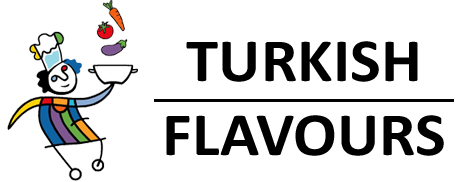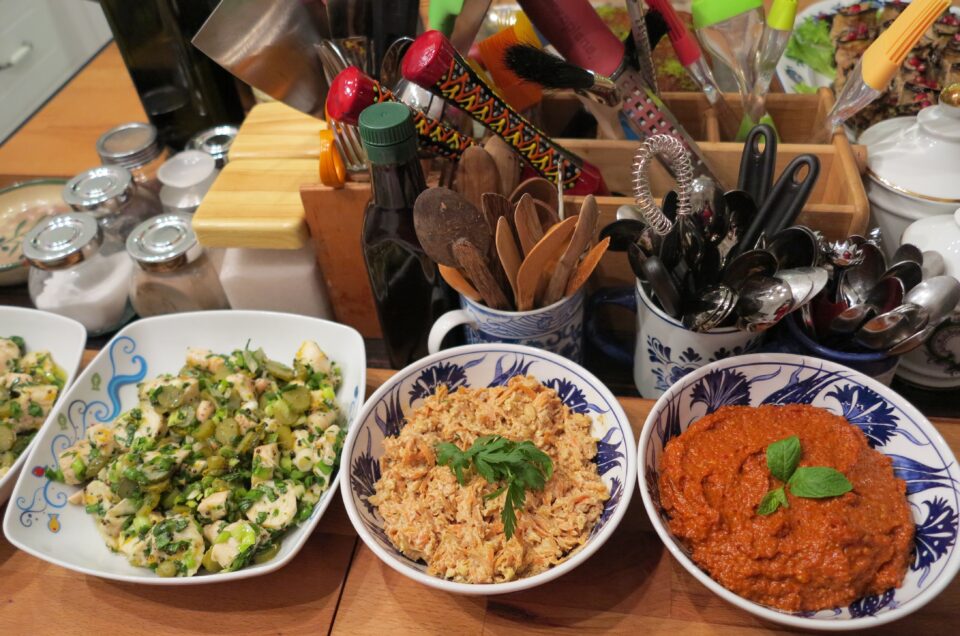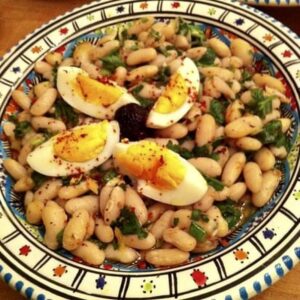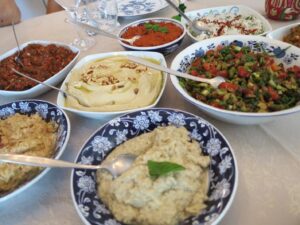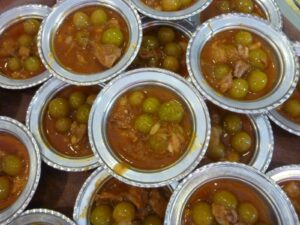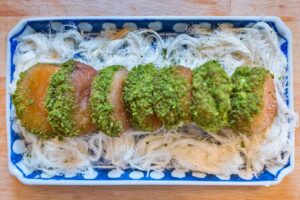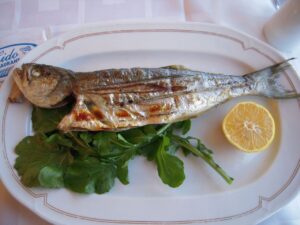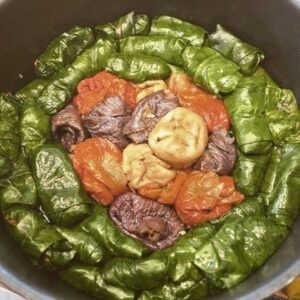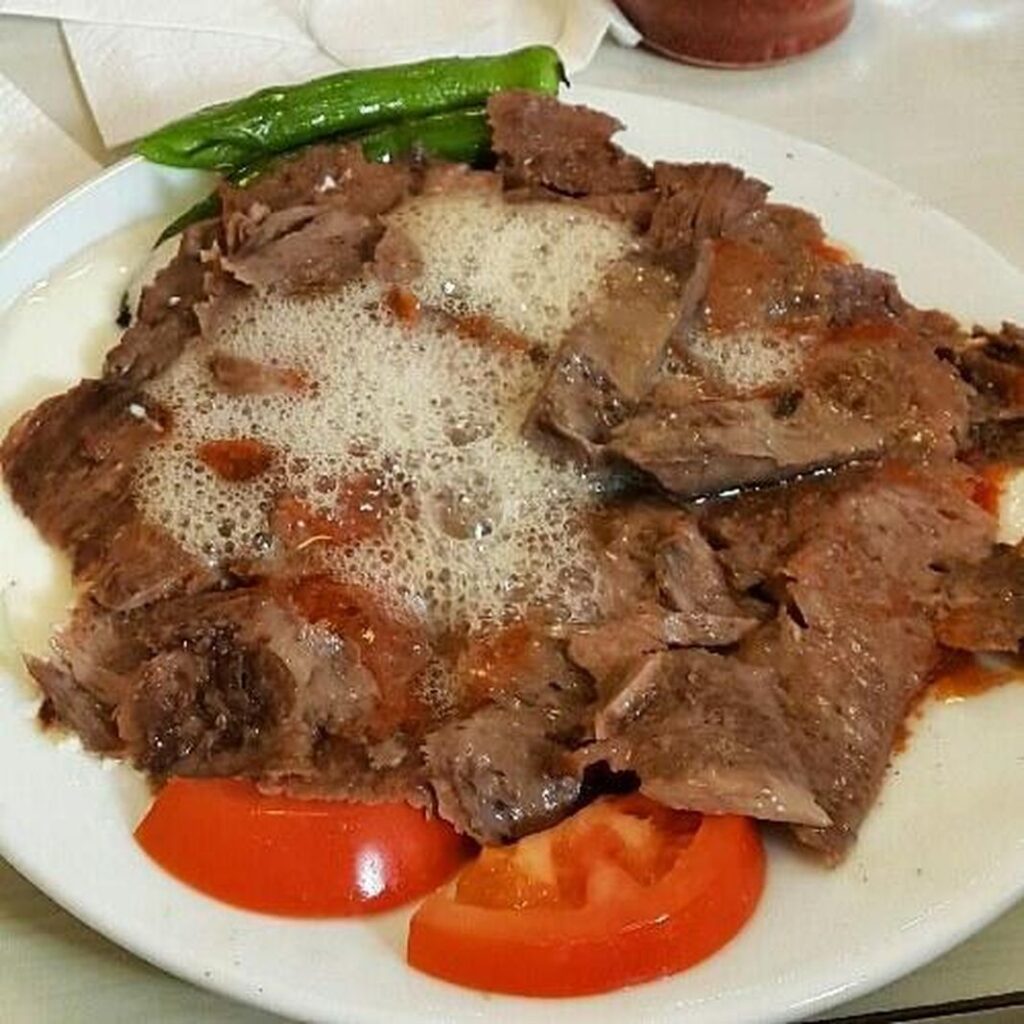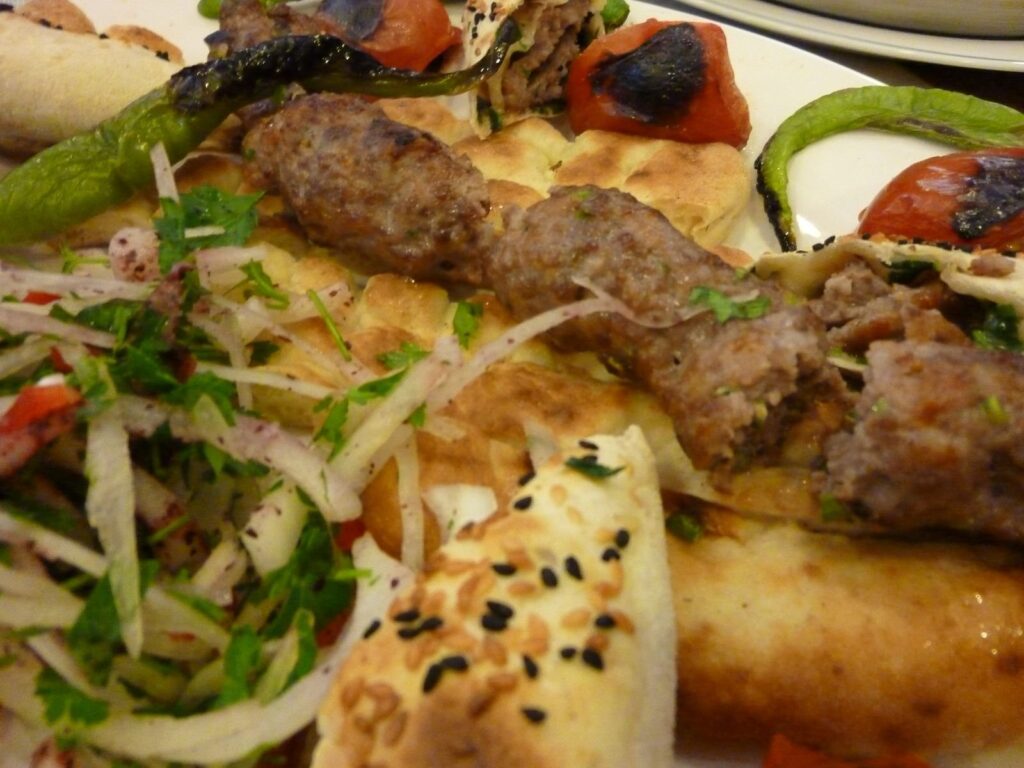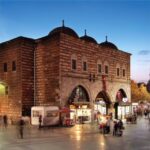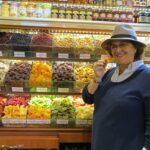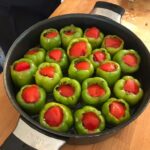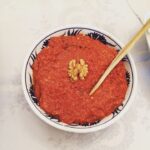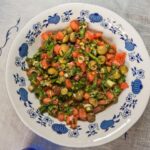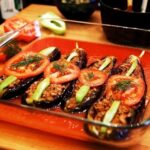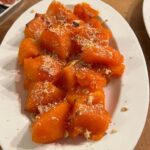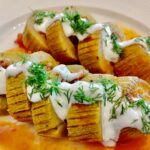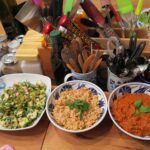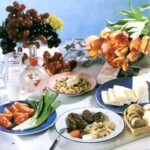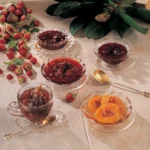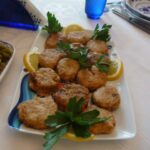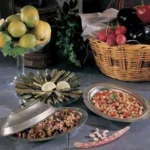For those who travel engaged in culinary pursuits,the Turkish cuisine is a very curious one. The variety of dishes that make up the cuisine,the ways they come all together in feast –like meals and the evident intricacy of each craf toffer enough material for life long enjoyment. Whether in a humble home or at a famous restaurant familiar patterns of this rich and diverse cuisine are always present.
Istanbul has always been the epicenter of the Turkish cuisine and understanding of Turkish cuisine will never be complete without a visit to the Sultan’s kitchen. The importance of culinary art for the Ottoman Sultans is evident to every visitor of Topkapı Palace.Dishes in the Turkish cuisine may be categorized into grain based,grilled meats,vegetables,fish and sea food,desserts and beverages. The foundation of the cuisine is based on grains(riceand wheat) and vegetables. The dishes are supposed to bring out the flavour of the main ingredient rather than hiding it behind sauces or spices. Contrary to the common Western impression of Turkish food spices and herbs are used very sparingly and singularly. Lemon and yoghurt is used to complement both vegetable and meat dishes to balance the taste of olive oil or meat. Most desserts and fruit dishes do not call for any spices.
Among the great good places where you can find the ingredients for the Turkish cuisine are the neighboorhood markets – Pazar and the permanent markets. Though the Spice Market has developed to be touristy there is still a lot to discover for the foodie. The Kadıkoy Market on the Asian side an open air street market, very different from the Spice Market and more in tune with the way most Istanbullus cook. The Organic Market is also to discover on Saturdays in Ferikoy.
A typical Turkish meal at a fish restaurant begins with a selection of mezes, or appetizers. These often become a meal in themselves, accompanied by an ample serving of raki ( the national alcoholic drink of Turks), that when taken together, form a recipe for friendship, laughter, and song. The menu of mezes often includes several types of eggplant, called patlican; ezme, a fiery hot salad of red peppers; sigara böregi, fried cheese “cigars”; and dolma, anything from peppers or vine leaves stuffed with rice, pine nuts, cumin, and fresh mint.
Kebap, is a national dish whose stature rivals that of pasta in Italy. While izgara means “grilled,” the catchall phrase kebap simply put, means “roasted,” and denotes an entire class of meats cooked using various methods. Typical kebaps include lamb “shish”; spicy Adana kebap, a spicy narrow sausage made of ground lamb; doner kebap, slices of lamb cooked on a vertical revolving spit; patlican kebap, slices of eggplant and lamb grilled on a skewer; and the artery-clogging Iskender kebap, layers of pide, tomatoes, yogurt, and thinly sliced lamb drenched in melted butter.
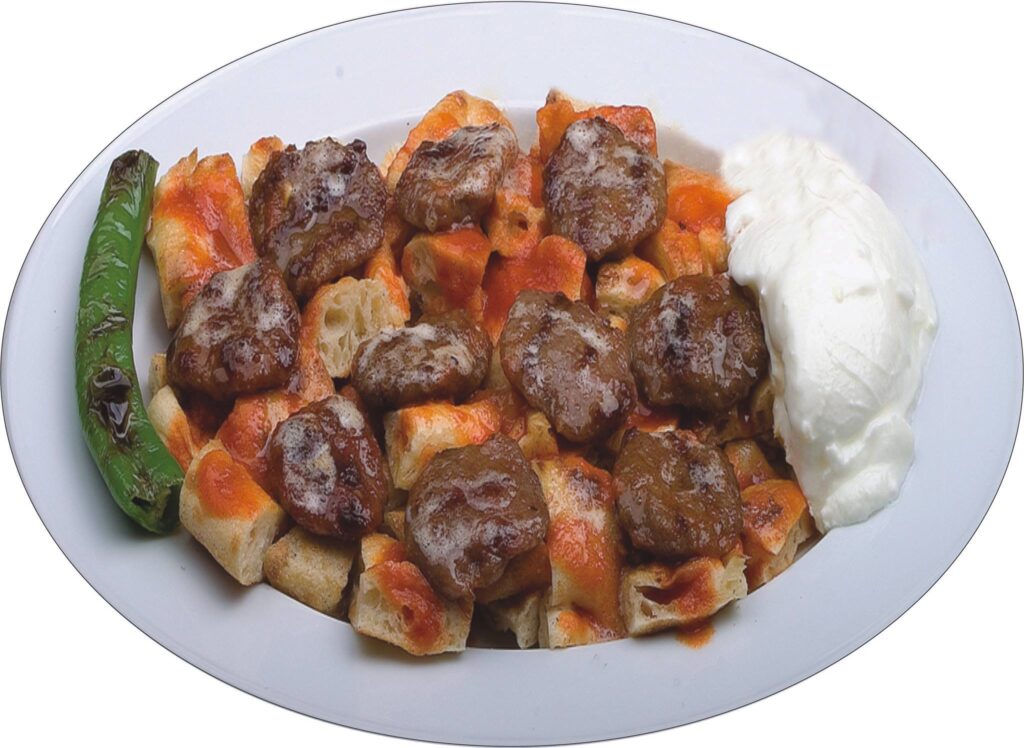
Turks are equally nationalistic over their kofte, Turkey’s answer to the hamburger: flat or round little meatballs served with slices of tomato and whole green chili peppers. But even though signs for kebap houses may mar theview,Turkish citizens are anything but carnivores, preferring instead to fill up on grains and vegetables. Sac kavurmarepresents a class of casseroles sautéed or roasted in an earthenware dish that, with the help of an ample amount of velvety Turkish olive oil, brings to life the flavors of ingredients like potatoes, zucchini, tomatoes, eggplant, and beef chunks. No self-respecting gourmand should leave Turkey without having had a plate of manti, a meat-filled ravioli, dumpling, or kreplach, adapted to the local palate by adding a garlic-and-yogurt sauce. Pide is yet another interpretation of pizza made up of fluffy oven-baked bread topped with a variety of ingredients and sliced in strips.Lahmacun is another version of the pizza, only this time the bread is as thin as a crepe and lightly covered with chopped onions, lamb, and tomatoes.
Along with meat vegetables are also consumed in large quantities in the Turkish diet.The simplest and most basic type of vegetable dish is prepared by slicing a main vegetable such as zucchini or eggplant, combining it with tomatoes ,green peppers and onions and cooking it slowly in olive oil and its own juices. Practically all vegetablessuch as fresh string beans, artichokes,root celery eggplants,pinto beans or zucchini can be cooked in olive oil. Dolma is the name given to stuffed vegetables.
Istanbul offers a lot of choices for streetfood. Simit is to a Turk what a bagel and cream cheese is to a New Yorker or a croissant to a Frenchmen. Simit vendors can be found virtually located on every street corner. Most simit vendors also carry two types of savory biscuits and rolls called Acma and Catal. You can stop by a tea house and enjoy a piping hot glass of tea with yor simit ,acma or catal!You can also come across some Simit Cafes that have Simit in various shapes and some stuffed with cheeses,vegetables and meat. Another particular street food is a Doner Sandwich. Conventional doner is prepared with lamb and beef but you can also find Chicken doner . Other street foods are Kofte ekmek ( a meatball sandwich), Midye dolmasi ( stuffed mussel), Kumpir ( a stuffed baked potato), fried mussels and corn on the cob.
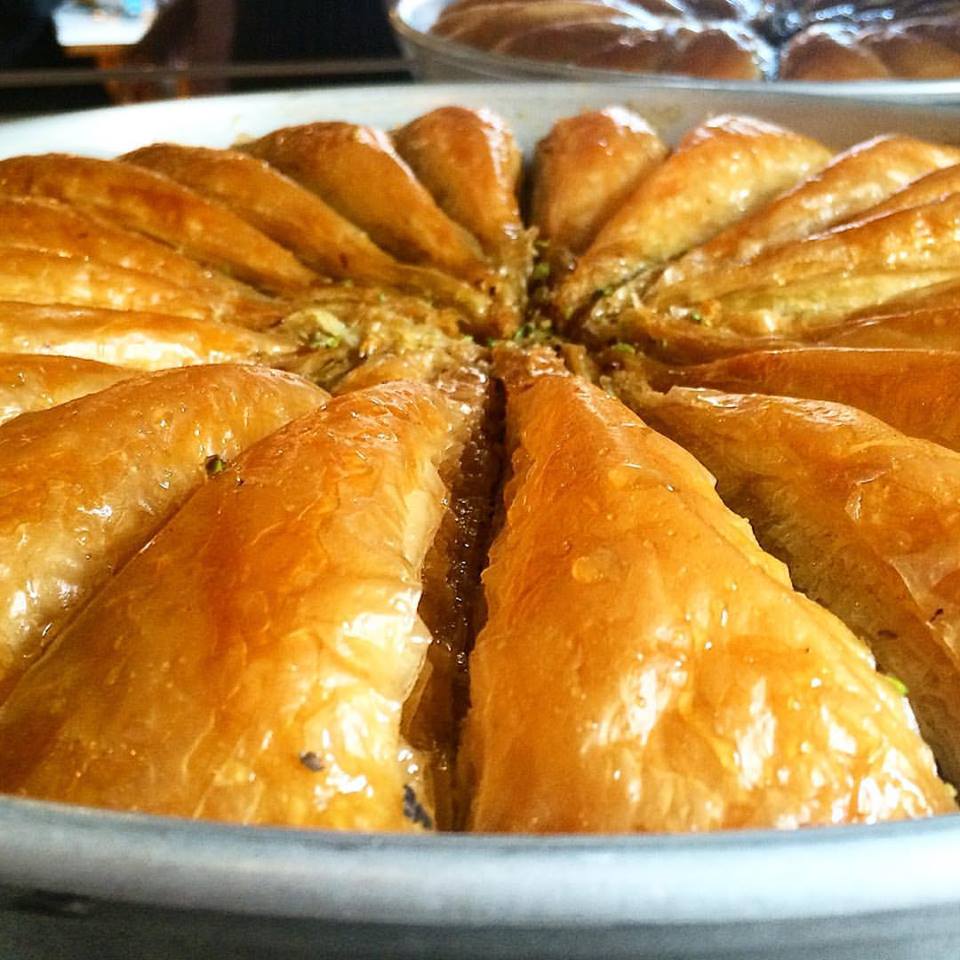
Desserts fall into two categories: baklava and milk-based. Baklava, a type of dessert made of thin layers of pastry dough soaked in syrup, is a sugary sweet bomb best enjoyed around teatime, although several varieties are made so light and fluffy that you’ll be tempted to top off dinner with a sampling. The milk-based desserts have no eggs or butter and are a guilt-free :)) pick-me-up in the late afternoon hours, although there’s no bad time to treat yourself to some creamy sutlac(rice pudding). The sprinkling of pistachio bits is a liberal addition to these and many a Turkish dessert, while comfort food includes the irmik helva, a delicious yet simple family tradition of modestly sweet semolina, pine nuts, milk, and butter.
From the days of the Ottoman Empire through to the present, coffee has played an important role in Turkish lifestyle and culture. The serving and drinking of coffee has had a profound effect on betrothal and gender customs, political and social interaction, prayer, and hospitality traditions throughout the centuries. Although many of the coffee rituals are not prevalent in today’s society, coffee has remained an integral part of Turkish culture. Derived from the Arabica bean, Turkish coffee is a very fine, powder-like grind. Turkish coffee is served hot from a special coffee pot called a cezve. Tradition states that after the guest has consumed the coffee and the cup is turned upside down on the saucer and allowed to cool, the hostess then performs a fortune reading from the coffee grounds remaining in the cup.
ISTANBUL STREETFOOD
The best thing about Istanbul street food now is that different street vendors sell only things that they themselves know and love. Street vendors are usually out at work in the early morning, and they pack up their carts sometime between 6 and 8 P.M., depending on the type of food. Luckily, eating on the street is very much a part of local life. You can’t walk from corner to corner on a street, cross a bridge, enter a square or park without coming across one or more snack shops, street stalls (büfe) or street vendors. Prices are always reasonable on the street.
Doner- Traditionally large, thin layers of lamb and beef are skewered on a giant rod, and roasted vertically over charcoal fire. This version is served inside a pide, a puffy, yeastless, oven-baked bread, with slices of tomato and pickles as garnish with no sauce.
Dürüm- This meal in wrap form comes in different varieties such as chicken, lamb ,beef, cheese or veggie.
Tantuni – A close relative of Dürüm tantuni features beef, tomatoes,peppers and a generous sprinkling of spices wrapped in the thinnest tortilla imaginable.It usually comes in spicy and less spicy versions.
Midye tava ( Fried Mussels) sandwich – Deep-fried mussels dressed with a creamy garlic sauce and served inside a crusty quarter loaf of bread.
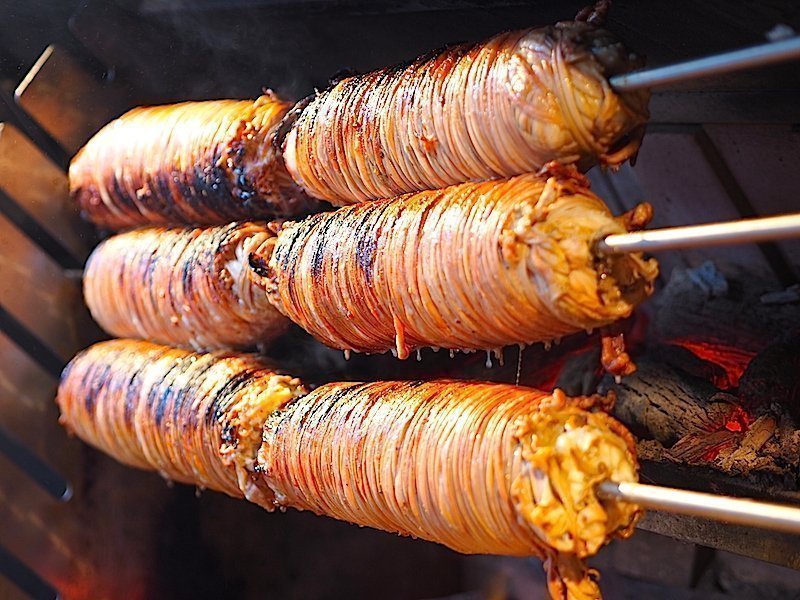
Kokoreç – Kokoreç is spiced and skewered sheep’s intestines, served in either half or quarter of a bread loaf with plenty of grease and salt to go with.
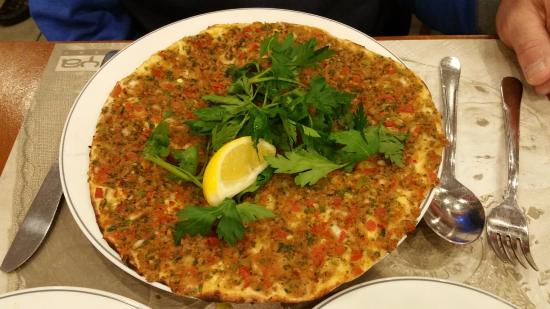
Lahmacun Often referred to by tourists as “Turkish Pizza” lahmacun is a very thin dough topped with a minced meat-onion- red pepper mixture,slid in the oven for a few minutes and served piping hot.It’s customary to top it with a handful of parsley and a squirt of lemon juice, than roll it into a wrap and enjoy with a glass of cold ayran.
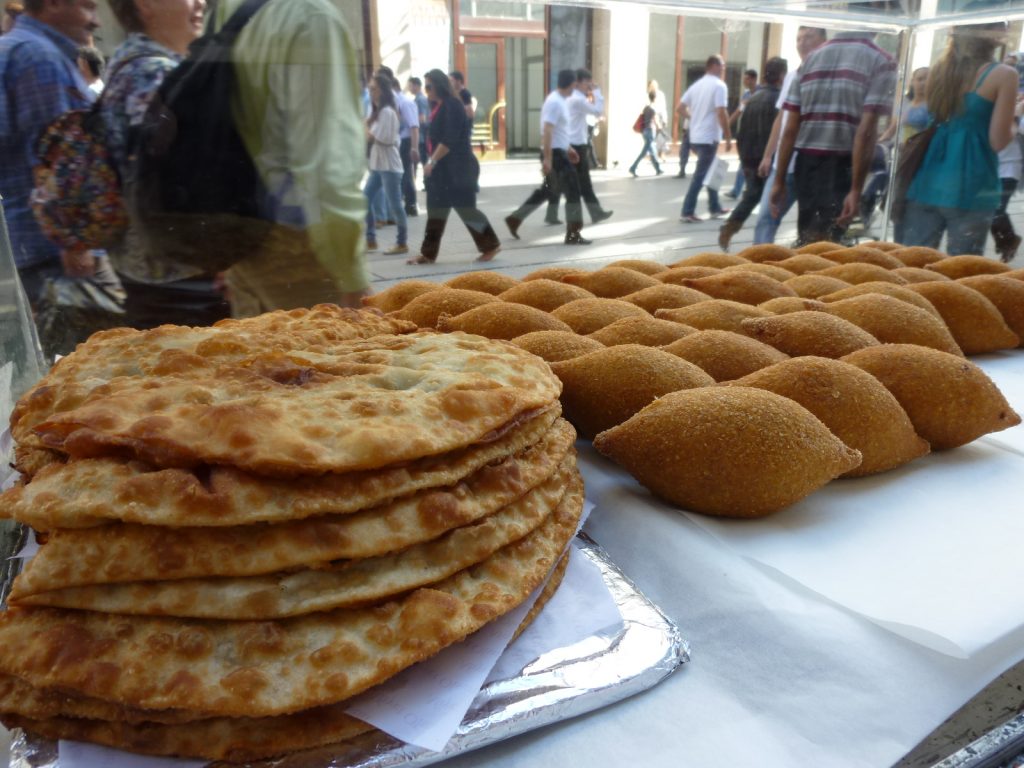
Icli Kofte Deep fried balls of bulgur wheat filled with minced lamb meat, walnuts, parsley, and red pepper flakes.
Kofte-meatballs – It is believed that there are 291 different kinds of meatballs (kofte) in Turkey. Make sure to eat at least once this Turkish delicacy.
Kumpir It’s a baked potato, split open and stuffed with butter and cheese, then topped with any and/or all of the following: pickles, sweet corn, corn drenched in spicy tomato sauce, spicy tomato sauce by itself, green olives, black olives, sausage, steamed peas, carrots, mushrooms, Russian salad, mayonnaise, ketchup…
Islak Burger Inside a burger bun, an unknown mixture of ground meats and spices , flaky, savory pastry. They come in different versions: plain (sade) or stuffed with pieces of cheese (peynirli), mince (kıymalı) or olives (zeytinli) grilled inside a panini press. The whole thing is then basted with deluded tomato paste.
Tavuk Pilav – It is chicken and rice sold in a cart!
Fish Sandwiches (Balik ekmek)
Fish sandwiches being prepared on a boat. Balik ekmek is another typical Istanbul snack, and pretty tasteful and safe when prepared fresh. It’s pretty straightforward – a grilled or fried fresh fish inside a large piece of bread.
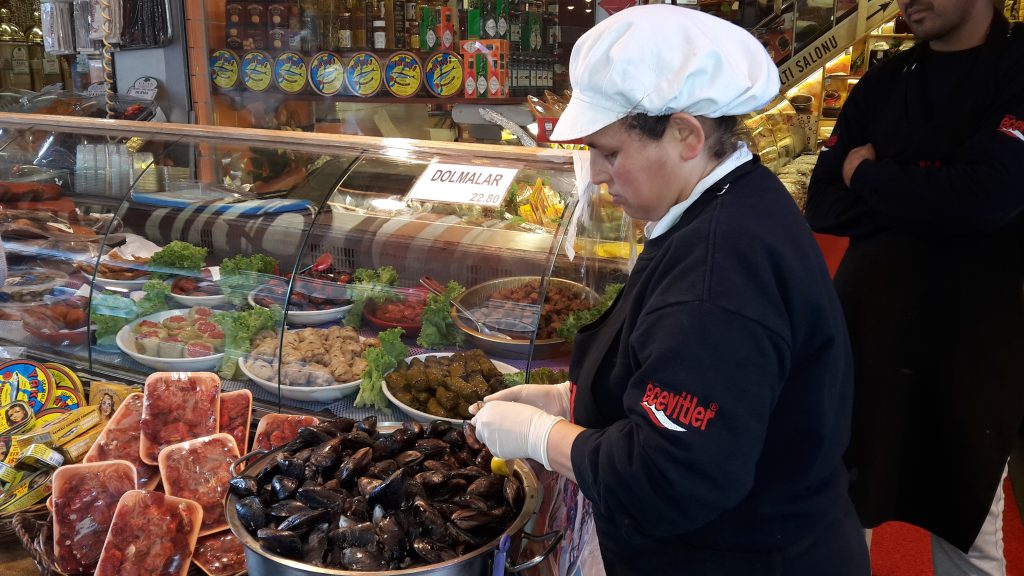
Midye dolma – These filled mussels are perfect any time from dusk till dawn, especially as a stomach liner for all the alcohol when you are out bar-hopping. The mussels are shelled, cooked with a lot of olive oil into a pilav, and then refilled into the shells. The vendor will re-shell them for you and serve so that you can eat them without getting your fingers oily.
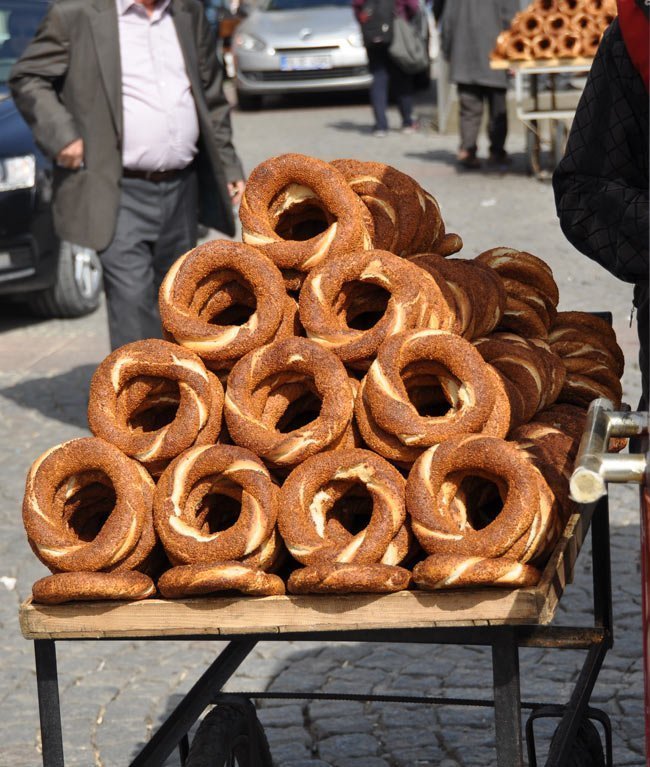
Simit – A crisp, ring-shaped, savory roll covered with sesame seeds. Delicious when fresh and preferably washed down with ayran (salty liquid yoghurt).
Acma (Achma)– This doughnut lookalike is ring-shaped just like the simit, but doesn’t have a crust. It’s soft and oilier, hence less dry.
Corn on the Cob – During the summer, you can find street sellers offering freshly boiled or grilled corn (mısır) on the cob. Unless you want it generously sprinkled with salt, make sure to tell the seller in time to go easy on it.
Roasted Chesnuts -Kestane – Street vendors selling corn in the summer, mostly shift to roasted chestnuts in winter time.
Street Stalls (Büfe)
Near busy public transportation hubs or in popular (tourist) areas, you’ll find plenty of small kiosks on street corners. These bufes typically sell cigarettes, phone-cards and non-alcoholic cold drinks in cans or small bottles, but most of them also sell inexpensive, tasteful thin roasted sandwiches (tost) and hot dogs (sosisli sandvich). Do try out thekasharlı tost, a sandwich with melted cheese.
Pastry Shops (Borekchi)
These too are excellent places. A borekci is usually a tiny shop, with only a handful of chairs and tables, offering tea, coffee or a small selection of cold drinks and borek for a quick breakfast or lunch.
Borek is a flaky pastry existing of several thin layers. There are different kinds, based on their shape, filling and cooking method. You may want to try out the juicy su boregi (something in between a pastry and a lasagna), peynirli borek (with cheese filling), patatesli borek (with potato filling), ıspanaklı borek (with spinach filling) or kıymalı borek(filled with minced meat).
Most of these shops also sell pide which is a pita like baked dough with the same filling options as börek.
Pogaca Flaky, savory pastry. They come in different versions: plain (sade) or stuffed with pieces of cheese (peynirli), mince (kıymalı) or olives (zeytinli).
Tulumba – a traditional Turkish dessert also sold by street vendors at touristic locations. The dough is deep fried and then soaked in sugar syrup.
Muhallebici – pudding house This concept of “Muhallebici” is one of those great traditions most Turkish people take for granted. This is where some great traditional Turkish desserts are served until late night (well into the morning) and some simple dishes such as Pilav with roast chicken and chicken noodle soup are also served. “Keskul“, a traditional pudding made out of an almond base and milk. It’s fragrant, rich and often topped with ground pistachios and coconut, you can also add a scoop of sweet cream ice cream on top.
THE SPICE MARKET
It is said that an old bazaar called Makron Envalos previously existed where the current Egyptian Bazaar stands.
The Egyptian Bazaar with its L-shape structure is located on the west side of the New Mosque (Yeni Cami). The year following the mosque’s construction, the “bazaar” section of the complex has been added by Mustafa Ağa, the head-architect of the Ottoman Palace. The main reason for it being called the “Egyptian Bazaar” is that it was built by the taxes collected from Cairo, Egypt. After the 18th century, this name began to be commonly used. The bazaar was originally called the “Valide Bazaar” or the “New Bazaar,” then it was later called the “Mısır Çarşısı” (Egyptian Bazaar). It has six doors total. The part near the Haseki Gate was designed as a double-storied structure and the upper floor also used as a court hall where cases between tradesmen and people were heard.
At the intersection of the the short and long branches of the bazaar an area is called the “Prayer Field” (Dua Meydanı) is located where an “Adhan ( Muslim call to prayer) Kiosk” is found. This section, designed and built out of wood, is the most notable part of the Bazaar. Once the bazaar opens, an officer in charge calls a prayer for the tradesmen and wishes them a high income.
Not only have spices been sold in the Egyptian Bazaar, but all sorts of medicines were sold during the old times in the bazaar as well. Signs used to be posted in conspicuous area of the shops. Most of the medicines were prepared according to the recipes from the book, “Nüzhet-ül Fi Tercüme-Afiyet” (A good appetite). Today, the bazaar has jewelry stores, herb and spice sellers, gift shops, etc.
The Egyptian Bazaar suffered heavy losses during the two large fires in 1691 and 1940. It took its present shape in 1940 after being restored by the Municipality of Istanbul.
TYPES OF TURKISH RESTAURANTS
LOKANTA
This kind of restaurant is typically Turkish and offers home cooking style food. From a selection of meals, it is possible to go to the window and choose whatever you like.
KEBABÇI
This is the type of restaurant where you can eat Turkish Kebabs. Kebap is roasted, broiled or grillled meat prepared in many different ways, each of them named by adding a word describing the kebap; doner kebap- is lamb meat roasted on a revolving spit, sish kebap- is cubes of marinated chicken or lamb meat on skewers, patlıcan kebap- meat and eggplant on skewers etc.
DOUGH SPECIALTY SHOPS
Turkish dough specialty shops would be a borekci, pideci, lahmacuncu or a mantıcı.
Borek is a flaky pastry filled with cheese, eggs, vegetables, or minced meat, then fried or baked. Gozleme is a thin dough filled with cheese and parsley and baked on thin iron plate placed in wood or charcoal fire. Pide is a thick dough base filled or covered with any combination of meat, cheese, eggs, etc. It is quite similar to pizza but served with butter and grated cheese. Lahmacun is a thin round dough base covered with a spicy mixture of minced lamb meat, onions, tomatoes and parsley. Manti is a kind of pasta filled with minced lamb meat and served with yogurt and garlic.
In the times before there was fast food, people went to these restaurants to eat tripe or chicken soup either for breakfast or after heavy nights of drinking. These places also sell a special food: Kokorec, roast and grilled lamb intestines, also sold in push carts by peddlers in the streets.
FISH RESTAURANTS
First, a large variety of soguk (cold) meze, (hors d’oeuvres) will be offered on a big tray among which you can choose a few, then you should sample a few sicak (hot) meze before the main dish. The main dish is either fish or meat. After having desserts or fruit, it is time to drink a cup of Turkish coffee.
Soguk meze: White cheese, olives, lakerda (salted bonito), dolma (stuffed vegetables), cacik (chopped cucumbers with yogurt and garlic), piyaz (beans salad), Arnavut cigeri (spiced liver), fava (bean paste), imam bayildi (stuffed eggplant), pilaki (white beans), patlican kizartma (fried eggplant), etc.
Sıcak meze: Fried mussels or squid, various kinds of borek, fried potatoes, etc.
TATLICI is a place where they sell different kinds of sweets. There are many of them like baklavaci, muhallebici, dondurmaci, helvaci, etc.
Baklava is thin layers of flaky pastry stuffed with almond paste, walnuts or pistachio nuts in syrup. Its name comes from the shape in which it is cut; lozenge-shapes. Kaymak is thick clotted cream eaten with most sweets as well as on its own with honey or jam. Aşure (Noah’s pudding) is made from numerous types of dried fruits and pulses.Sutlac is rice pudding. Kadayıf is shredded wheat in syrup. Kestane sekeri is glacé chestnuts. They are generally canned or kept in glass jars in syrup. It is common in Bursa. Lokum (Turkish Delight) is cubes of jelly like or gummy confection flavored with flower or fruit essences and dusted with powdered sugar. Pişmaniye is a sweet made of sugar, flour and butter which resembles flax fibers. Tahin-Pekmez is a mixture of both Tahin, sesame oil and Pekmez, molasses or treacle (heavy syrup obtained from grapes). Helva is a flaky confection of crushed sesame seeds in a base of syrup. Dondurma is ice cream.
